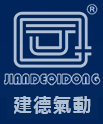Address: No. 1 West Road, Xinanjiang Industrial Park, Jiande City, Zhejiang Province
Mobile
Copyright © Jiande Xinanjiang Pneumatic Components Co., Ltd. 浙ICP备05041881号-3 Powered by www.300.cn
National Service Telephone
0571-64569182
Fax:+86-571-64569618
Email:jiangjie@jdqd.com
Diagnosis and Maintenance of Pneumatic Solenoid Valve
Page view
[Abstract]:
The pneumatic control reversing valve uses the gas pressure to make the main spool move and change the gas flow direction. According to different control modes, it can be divided into pressure control, pressure relief control and differential pressure control. Pressure control means that the pressure of the control signal is gradually rising. When the pressure increases to the action pressure of the valve core, the main valve will change direction; pressure relief control means that the pressure of the gas control signal is reduced, and when the pressure is reduced to a certain value, the main valve will change direction; differential pressure control means that the main valve core will change direction under the action of pressure difference at both ends.
According to the structure of the main valve, the pneumatic reversing valve can be divided into two main forms: shut-off valve and sliding valve. The structure and working principle of sliding valve type pneumatic directional valve are basically the same as that of hydraulic directional valve. This paper mainly introduces the shut-off directional valve.
2. Pilot electromagnetic directional valve
Pilot electromagnetic reversing valve is controlled by electromagnet at first, which generates the pilot pressure, and then the pilot pressure is used to drive the main valve spool to change direction. It is suitable for large diameter occasions.
Pilot dual-electronically controlled two-position four-way electromagnetic reversing valve. It consists of pilot valve (Dl, D2) and main valve. The main valve consists of body 1 and piston assembly 2. The figure shows that Dl and D2 are in the state of power failure. The movable iron cores 5 and 6 of the solenoid valve are closed. When Dl is on and D2 is off, the moving iron core 5 is sucked up, and the compressed air from the P port enters the f cavity of the valve through the hole a (dotted line). And from the sealing plug 4 (one-way valve) around the lip into the hole, and into. Wide cavity, push down piston assembly 2, make P and A through, B through the core hole h and T through (exhaust). A port has compressed air output at the same time, some compressed air flows into the hole g, one way through the throttle hole d into the C cavity so that the sealing plug 4 moves down to seal the exhaust hole b, the other way compressed air into the f cavity, which acts on the upper end of the piston assembly 2. At this time, even if the Dl power off, the piston assembly 2 will not be positioned, that is, the valve has memory function.
When the pilot valve D2 is energized and Dl is cut off, the moving iron core 6 is absorbed, and the compressed air in the C cavity is discharged through the T1 port. At this time, the compressed air from P to A acts on the large piston and the small piston. Because of the area difference between the big piston and the small piston, the upward force is produced, which makes the piston assembly 2 move up. At the same time, the sealing plug 4 is moved up and the valve opening 3 is opened so that the compressed air at the upper end of the piston assembly 2 is discharged through hole 6. After the piston assembly 2 is moved up, P and B are connected, A and T are connected (exhaust). At this time, even if D2 power off, the upward force due to the difference of piston size and area still exists, so the output state will not change, that is, it has memory function. Pneumatic solenoid valve, like hydraulic solenoid reversing valve, has many types, and its working principle is similar, so it will not be repeated.
1. Pneumatic Controlled Directional Valve
The pneumatic control reversing valve uses the gas pressure to make the main spool move and change the gas flow direction. According to different control modes, it can be divided into pressure control, pressure relief control and differential pressure control. Pressure control means that the pressure of the control signal is gradually rising. When the pressure increases to the action pressure of the valve core, the main valve will change direction; pressure relief control means that the pressure of the gas control signal is reduced, and when the pressure is reduced to a certain value, the main valve will change direction; differential pressure control means that the main valve core will change direction under the action of pressure difference at both ends.
According to the structure of the main valve, the pneumatic reversing valve can be divided into two main forms: shut-off valve and sliding valve. The structure and working principle of sliding valve type pneumatic directional valve are basically the same as that of hydraulic directional valve. This paper mainly introduces the shut-off directional valve.
2. Pilot electromagnetic directional valve
Pilot electromagnetic reversing valve is controlled by electromagnet at first, which generates the pilot pressure, and then the pilot pressure is used to drive the main valve spool to change direction. It is suitable for large diameter occasions.
Pilot dual-electronically controlled two-position four-way electromagnetic reversing valve. It consists of pilot valve (Dl, D2) and main valve. The main valve consists of body 1 and piston assembly 2. The figure shows that Dl and D2 are in the state of power failure. The movable iron cores 5 and 6 of the solenoid valve are closed. When Dl is on and D2 is off, the moving iron core 5 is sucked up, and the compressed air from the P port enters the f cavity of the valve through the hole a (dotted line). And from the sealing plug 4 (one-way valve) around the lip into the hole, and into. Wide cavity, push down piston assembly 2, make P and A through, B through the core hole h and T through (exhaust). A port has compressed air output at the same time, some compressed air flows into the hole g, one way through the throttle hole d into the C cavity so that the sealing plug 4 moves down to seal the exhaust hole b, the other way compressed air into the f cavity, which acts on the upper end of the piston assembly 2. At this time, even if the Dl power off, the piston assembly 2 will not be positioned, that is, the valve has memory function.
When the pilot valve D2 is energized and Dl is cut off, the moving iron core 6 is absorbed, and the compressed air in the C cavity is discharged through the T1 port. At this time, the compressed air from P to A acts on the large piston and the small piston. Because of the area difference between the big piston and the small piston, the upward force is produced, which makes the piston assembly 2 move up. At the same time, the sealing plug 4 is moved up and the valve opening 3 is opened so that the compressed air at the upper end of the piston assembly 2 is discharged through hole 6. After the piston assembly 2 is moved up, P and B are connected, A and T are connected (exhaust). At this time, even if D2 power off, the upward force due to the difference of piston size and area still exists, so the output state will not change, that is, it has memory function. Pneumatic solenoid valve, like hydraulic solenoid reversing valve, has many types, and its working principle is similar, so it will not be repeated.
Previous article:
Development Trend of Pneumatic Components in China
Cautions in the Use of Magnetic Switches
Next article:









